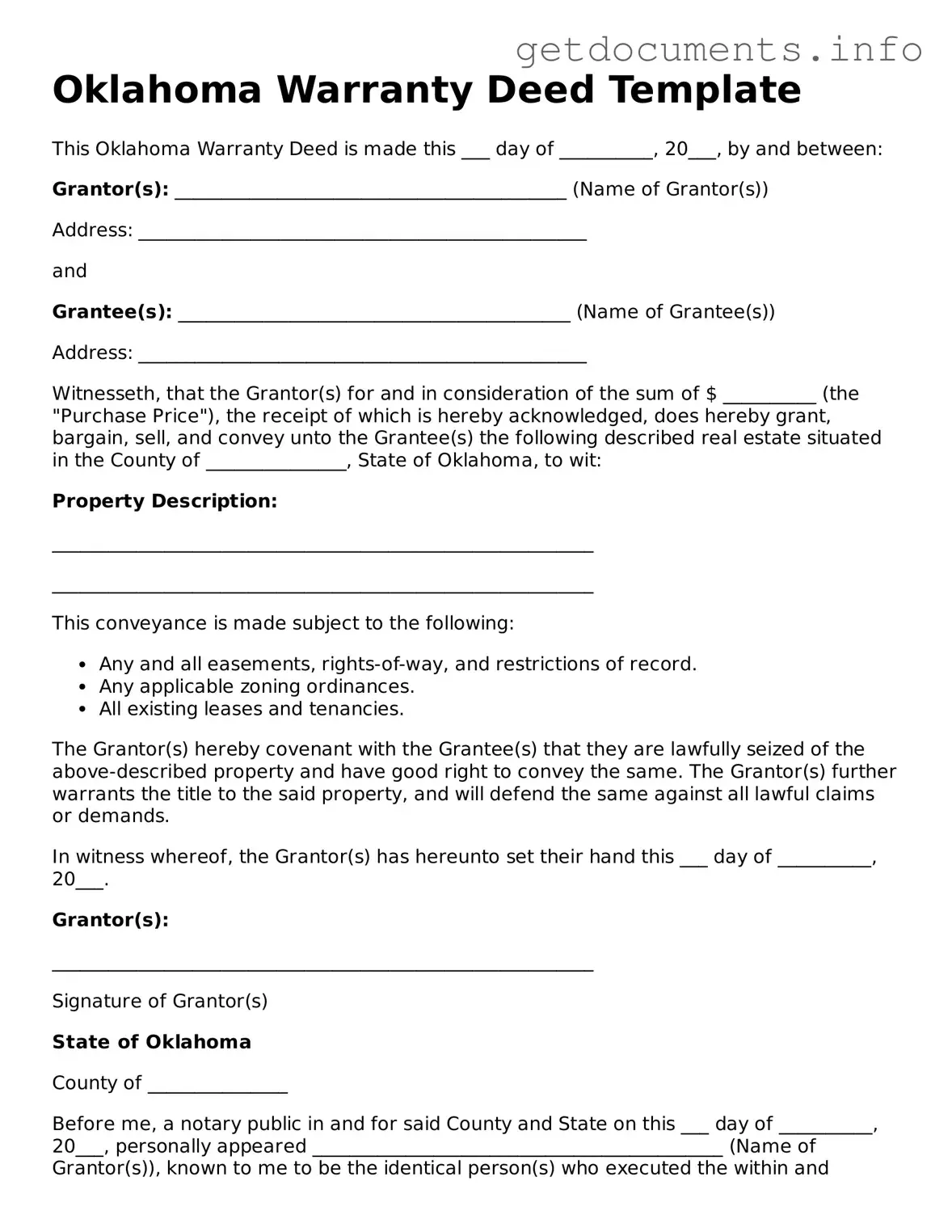In the realm of property transactions, the Oklahoma Deed form serves as a crucial document that facilitates the transfer of real estate ownership between parties. This form encapsulates essential details, including the names of the grantor and grantee, the legal description of the property, and the consideration, or value, exchanged for the property. Additionally, it often requires the inclusion of signatures, notarization, and sometimes witnesses to validate the transfer. By delineating the rights and obligations of both the seller and the buyer, the deed not only formalizes the transaction but also provides a public record of ownership. Understanding the nuances of this form is vital for anyone engaged in buying or selling property in Oklahoma, as it ensures compliance with state laws and protects the interests of all parties involved. The intricacies of the Oklahoma Deed form reflect the broader legal framework governing real estate transactions, making it an indispensable tool in the real estate landscape of the state.
